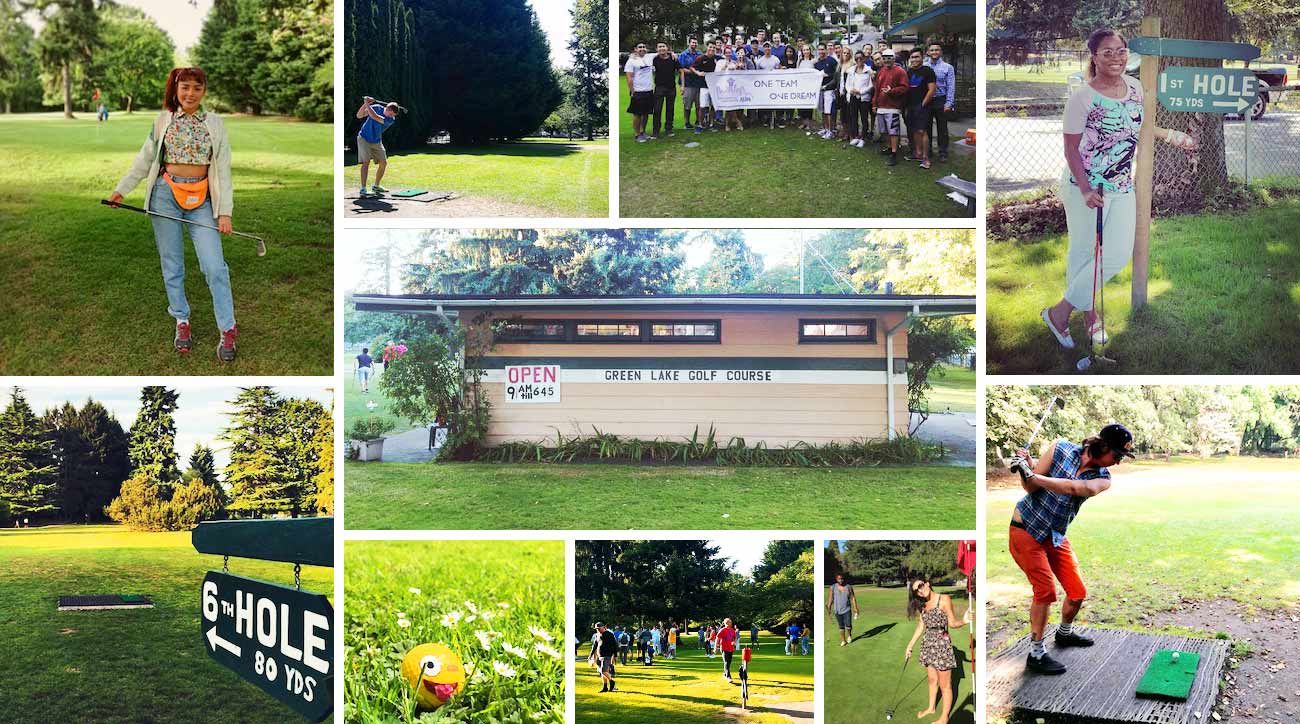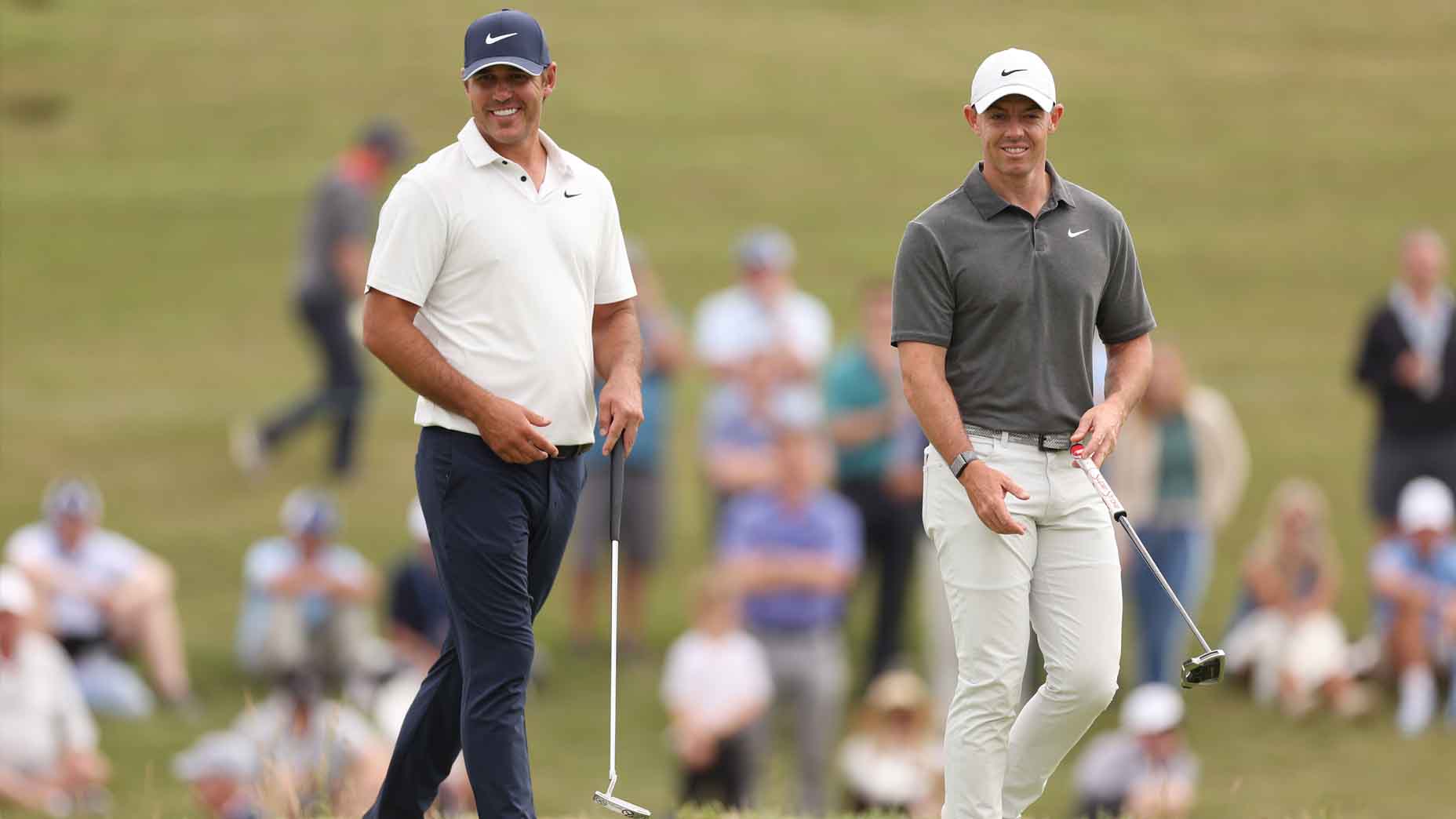 ‘No limitations:’ TGL’s biggest change shows where league wants to go
‘No limitations:’ TGL’s biggest change shows where league wants to go
This highly inclusive Seattle course ($9 fees! fivesomes!) is a model for the future of urban golf
On a six-acre plot in the north end of Seattle, the nine-hole, 705-yard Greenlake Pitch and Putt is a shaggy arcadia. Rock-hard splotches of dirt creep from the tee boxes into the fairways. Uncommonly slow greens bring Velcro to mind. The holes (officially ranging from 60 to 115 yards) aren’t as long as the signs say they are.
The walk from 3 to 4 is often treacherously water-logged, the course’s lone hazard is a random mountain of sand that solemnly guards the 5th tee, and on 2 and 9, preternaturally long branches stretch out over the fairway, ready to swat balls like Dikembe Mutombo. Greenlake caters to novices — from college students armed with Rainier-filled backpacks to sprawling families — which means that at any given moment, you could find yourself in the path of a careening shank unaccompanied by a portentous “fore!”
View this post on Instagram
In case it wasn’t clear, this isn’t a roast. It’s an ode. Greenlake’s surface-level blemishes are part and parcel to its enduring charm and to its vaunted status: this is Seattle’s most beloved golf course. By leaning into its quirks, Greenlake offers a refreshing conception of golf as a casual, inclusive, and affordable pastime. (Last summer it raised its adult green fees to $9.) Greenlake is more than a compelling model for golf’s uncertain future — it exposes golf’s potential to shed its reputation as a bastion for the wealthy and become a true sport of the people.

Let me admit my own bias. Greenlake was an important part of my life during my formative years, when two rounds for a junior came out to $6 on a summer weekday. Greenlake was like my basement, but outside. It was a sanctuary where I could hang with friends away from my parents’ watchful eyes. It was also my entry point into gambling; many a tie was settled on the putting green with a bag of Doritos or next round’s greens fee on the line. A good score had the potential to qualify for Greenlake’s end-of-year tournament, where every September us mortals had the opportunity to vie for eternal glory, and also to bear witness to Greenlake legends like Lane Himmelman, who holds the unofficial course record of 19 (!).
“Our whole summer was building up to the Greenlake tournament,” remembers Carson Dunn, 28, a long-time patron of the course. Dunn claims that he is still haunted by his “tragic collapse” in the 2007 junior tournament, in which he missed a four-foot putt on the final hole to drop into a tie for first — and lost in the ensuing playoff.
Earlier this year, in March, Greenlake kicked off its 71st season. For the last 36 years, the course has been run by Dione Taitch and her mother, Marlene, who lease the property from the city parks department for a percentage. Taitch describes the course as being “run-down” when they took over in the ’80s. They have instituted the annual tournament, planted two trees, and spruced up various aspects of the operation, but the overall infrastructure has remained the same under their tenure: a 16’x24’ clubhouse, maintenance shed, putting green, and a couple of picnic tables. “We only started taking credit cards, like, 10 years ago, we still don’t have Wi-Fi, and nothing’s computerized,” she says. “And there are other things that are kind of old school — but they work for us.”
As a standalone short course, Greenlake faces a series of unique obstacles. Taitch talks about Greenlake’s low-tech aspects with an aw-shucks humility, but the lack of structural change suggests that the course generates, at best, a modest cash flow and does not receive significant investment from the city. Most pitch and putts, par-3 courses, and executive courses are a part of larger golf facilities that don’t rely on them to produce the lion’s share of their income. This isn’t the case with Greenlake, a seasonal, family-run operation that has never employed more than 10 people and has one person on shift in the clubhouse at any given time. Taitch and her mother are jacks-of-all-trades by necessity. “I went to school for accounting, and then thought, ‘I don’t want to be an accountant,’” Taitch says. “And then I end up doing a lot of the accounting, but I also go out and mow the greens with the best of ’em.”
ADVERTISEMENT
View this post on Instagram
Greenlake’s homey, laidback vibe is a blessing and a curse, as the prevailing lack of golf etiquette can cause headaches for management and golfers alike. “Half the clientele doesn’t actually know anything about golf,” Dunn says. “They don’t know to yell ‘fore,’ there’s people stabbing greens with clubs and stepping on the hole.” He speaks in part from experience; after he urinated on a green during his first trip to a regulation-size course as a young boy, his dad forbade him from playing any course besides Greenlake. “I try to give them a quick rundown of basic golf etiquette, so that nobody gets hurt,” Taitch says. “This last year we had a couple issues with people thinking that because we aren’t a quote-un-quote ‘real course,’ they don’t have to follow rules.” She loosened the course by-laws to allow fivesomes after several oversized parties as large as nine people bristled at the suggestion that they break up into two smaller groups. “Nobody would ever try to do that on a big course,” Taitch says.
Taitch says that play at Greenlake has increased nearly every year since the ’80s, a trajectory that flies in the face of industry trends. According to the NGF, the number of golfers in the U.S. fell by 19% between 2003 and 2014. On top of that, the construction boom of the ’90s and early 2000s, with courses often serving as the centerpiece of suburban housing developments, has evaporated entirely; according to the US Golf Economy Report, the amount of money invested in the construction of new courses in the U.S. per year plummeted from $5.65 billion in 2000 to $210 million in 2016. This crisis, along with increased concerns about sustainability in golf, has sparked an appetite and appreciation for smaller courses like the Cradle at Pinehurst (built in 2017), Oregon’s 13-hole Bandon Preserve (built in 2012) and Sweetens Cove (built in 2014). Each is celebrated for its layout, but for its vibe, too.
Things look particularly bleak for municipal courses. Two-thirds nationwide are losing financial propositions, and 16 closed between 2016 and 2018 amidst increased dialogue about converting suburban and urban courses into everything from public parks to land for new housing to detention basins to prevent flooding. These days, if a city buys a golf course, it’s probably because it wants to redevelop it.
Earlier this year, Seattle mayor Jenny Durkan commissioned a 131-page study to lay out options for the future of the city’s four public golf courses. The study provoked an outcry and the creation of a local golf course preservation movement, Save Seattle Golf. Greenlake Pitch and Putt was not mentioned in the study; it has a small footprint (30 times smaller than the average full-size course) and exists on the outskirts of a large park, which makes it relatively immune to redevelopment.
Greenlake attracts beginner golfers because it tears down two of golf’s biggest barriers to entry: It’s significantly cheaper and faster to play than full-size courses. But it’s hardly just attracting newbies; the course still boasts a slate of regulars who have been coming back for decades. Taitch says the highest praise she can receive is for a customer to tell her that Greenlake feels like home. “I actually play golf with a guy who just turned 91,” says Tom Petrie, who helps the Taitches run the course. “Every week he comes in at Wednesday at 3 p.m., I started playing with him four years ago.”
Greenlake exists outside the scope of what we imagine when we think about golf. It circumvents not only the friction that occurs when golf’s fundamentally rural ambitions presses up against an urban setting, but also the complicated tension between nature and artifice that has come to define the sport. It embraces its own physical and financial limitations and asks you to come as you are. This unobtrusive, unpretentious quality is the source of Greenlake’s magnetic appeal. It’s what makes the course truly sustainable and keeps golfers keep coming back, whether it be for the end-of-year tournament — an elusive Greenlake championship remains Dunn’s white whale — or for a quick round on a March morning. Petrie, who made five holes-in-one last year, plays nearly every day. “I never get bored of it, to be honest,” he says.
ADVERTISEMENT




